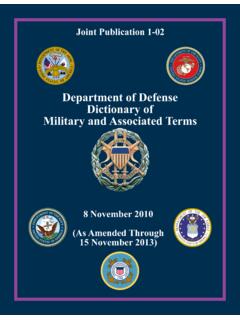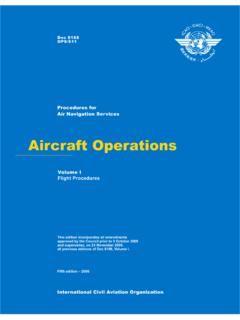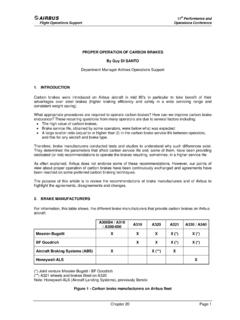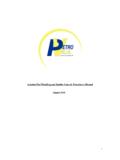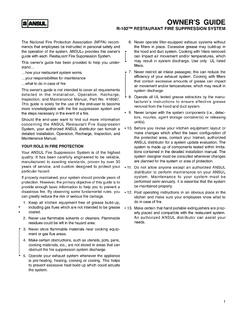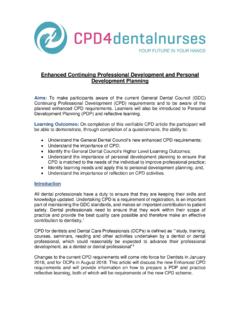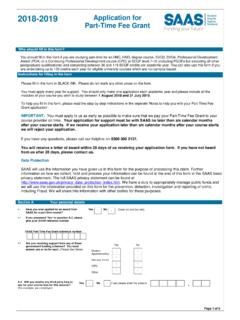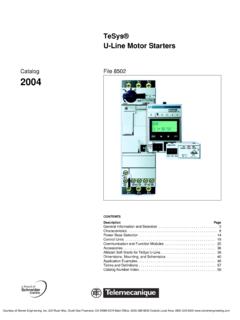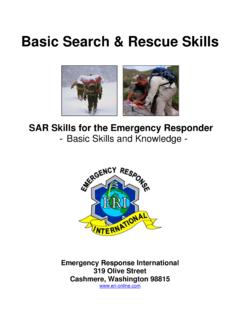Transcription of Aviation Fuel Handling and Quality Control …
1 Aviation fuel Handling and Quality Control Procedures Manual August 2008. 1. Table of Contents Section 1. Quality Control and Test Procedures 1- General ..3. White Bucket Test ..3. Clear and Bright Test ..5. Free Water Detection ..7. Solid Particulate Contamination Detection ..8. Microbiological Contamination ..12. Electrical Conductivity ..15. Density ..16. Section 2. fuel Drum Storage 2- General ..20. Handling of Drums ..20. Method of Preparation of Servicing from the Drums ..21. Fuelling from Precautions, Safety and Quality measures..22. Section 3. Aboveground fuel Storage Tank 3- General ..24. The above-ground system ..24. Inspection of fuel Storage Tanks and Safety Features . 25. Receiving fuel .
2 26. Maintaining fuel in the Aboveground Storage Tanks ..27. Section 4. Fire Prevention 4. General ..28. How fire Sources of Prevention of Fire Prevention of Ignition Source ..30. a. Prevention of vapour formation ..30. b. Prevention of heat Section 5. Health and Safety 2. 5. General ..32. Personal Table of Contents continued Minimizing Health Environmental List of Annexes Annex A MSDS ..34. 3. Aviation Jet fuel Section 1. Quality Control and Test Procedures General This section describes in detail the test methods, procedures and standard/best practices common to Aviation fuel testing and Quality Control throughout the industry. Reference: ASTM Manual 5, Aviation fuel Quality Control Procedures and ASTM Standard Practices for Manual Sampling of Petroleum Products, D 4057.
3 White Bucket Test (Cleanliness of fuel ). The white bucket is a simple but reliable test for detection of significant amounts of water and particulates. Water occurs in different forms in the fuel ;. 1. Dissolved in the fuel , normally this water can not be removed from the fuel . 2. Suspended or entrained in the fuel . Entrained water can be detected with the naked eyes. The fine droplets of water in fuel reflect light and in high concentration give the fuel a cloudy or hazy appearance. 3. Water in high quantity into fuel may be caused by leakage into storage tanks, delivery of water laden fuel , condensation or the coalescence and subsequent settling of entrained water. 4. Chart Particulate or dirt is normally found in fuel in the form of rust, scale, lint, dust, particles from gaskets and hoses which have been released from the side of the tanks, piping and transportation vehicles.
4 Precautions to be taken prior to test: Person testing fuel should be sufficiently protected to prevent contact with fuel by wearing eye protection, gloves and appropriate apparel. Apparatus: A bucket, white porcelain lined or stainless steel of a capacity of seven litters (7. L) and with a bonding cable (a separate cable if not equipped, must be provided). A shiny coin with well-defined feature is an additional tool. Procedure, method of testing and observation: Bucket must be clean and dry. a) A static bonding cable must be connected between bucket and the source of sample container, pipe or valve as required b) Take a sample at system operating pressure (except samples from a storage tank or transport trailer).
5 fuel in the drain or line should be removed or displaced before taking sample. Valve should be completely open without causing spill. c) Fill bucket at least 15 cm of its depth. d) Place bucket on a level surface and allow it to stand for few minutes to settle sample to ensuring no air bubbles present. e) Visually inspect and observe the fuel sample to determine presence of free water, particulates, unusual colour, haze, floating material and lacy substance layers. f) Swirling of sample will cause dirt or water to collect at the centre of bucket for easier examination. g) Drop a coin with well-defined features into the fuel sample bucket to assist visual detection of haze. Evaluation of observations and findings: a) Observed colour of jet fuel should be colourless to a light straw.
6 Colour should be similar to previously acceptable test if any. b) A cloudy or haziness condition in appearance of the fuel sample suggests water contamination. c) If sample does not appear cloudy, a drop of food colouring or coffee added to the sample will ensure absence of water when coloured drop settles at the bottom. If it dissolves in the sample the fuel is not pure and contaminated with unacceptable amount of water. 5. d) Slime on the bottom surface of container or lacy substance is an indication of Microbiological Contamination. e) The following definitions in Table and should be considered when inspecting a fuel sample;. Table Particle Appearance (Source ASTM). Clean No visible particles, sediment, dye, rust or solids Slight Particulate Some fine to small size particles Particulate matter Many small particles floating or settled on the bottom Dirty Discolouration, many particles floating or settled on the bottom Table Water Contamination Appearance (Source ASTM).
7 Bright No water present after sample settled down after a minute. Sample sparkle Hazy Fine water droplets throughout sample Temporary condition due to drop in temperature Cloudy Extremely fine droplets or particles throughout sample Wet Droplets or free water found at the side of the container or at the bottom Surfactant or Microbial Slime on bottom or at fuel water interface, dark brown/black scum or lacy substance Other Product cross-Contamination Unusual appearance, colour and odor Clear and Bright Test: Delivered fuel must be clean, bright and not contaminated with free water. Clear is a visual condition of fuel with the absence of cloud, emulsion, visible 6. particulate matter or entrained water.
8 Bright is the Quality of fuel refers to the shiny and sparkling appearance of clean and dry fuel . The bright and clear condition of the fuel is not dependent on the natural colour of the fuel . The Clear and Bright test is a visual check and conducted to detect water or other solid contaminants in the fuel . An evidence of external contaminants renders the fuel as not suitable for use and points to a requirement of further laboratory analysis. Precautions to be taken prior to test: Person testing fuel should be sufficiently protected to prevent contact with fuel by wearing eye protection, gloves and appropriate apparel. Apparatus: Glass Jar a wide mouth glass jar of cm (3 in.) in diameter or other similar transparent container.
9 A white paper sheet or light background surface material is a great tool to enhance detection of contaminants. Procedure, method of testing and observation: Glass Jar must be clean and dry. a) Care should be observed when opening any pressured drain or tap to prevent splash or spill. b) Take a sample at system operating pressure (except samples from a storage tank or transport trailer). fuel in the drain or line should be removed or displaced before taking sample. Valve should be completely open without causing spill. c) A fuel sample can be taken immediately after taking a white bucket sample described above by dipping the jar into bucket. d) Place jar with the fuel sample in it on a level surface for a minute to allow any air bubble to rise to the surface.
10 E) Visually inspect and observe the fuel sample to determine presence of free water and solid contaminants. f) Swirling of sample would cause dirt or water to collect at the centre of the jar and would be visible at the bottom of the vortex. g) If presence of water is evident, observe the colour and appearance of the surface of water where it contacts the fuel . Evaluation of observations and findings: a) Observed colour of jet fuel should be colourless to a light straw. Colour should be similar to previously acceptable test if any. b) A cloudy or haziness condition in appearance of the fuel sample suggests water contamination. 7. c) If sample does not appear cloudy, a drop of food colouring or coffee added to the sample will ensure absence of water when coloured drop settles at the bottom.
